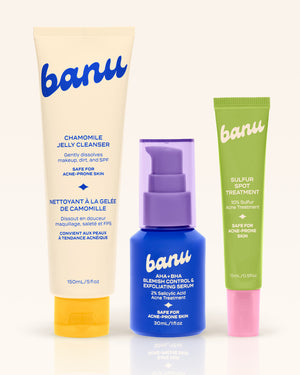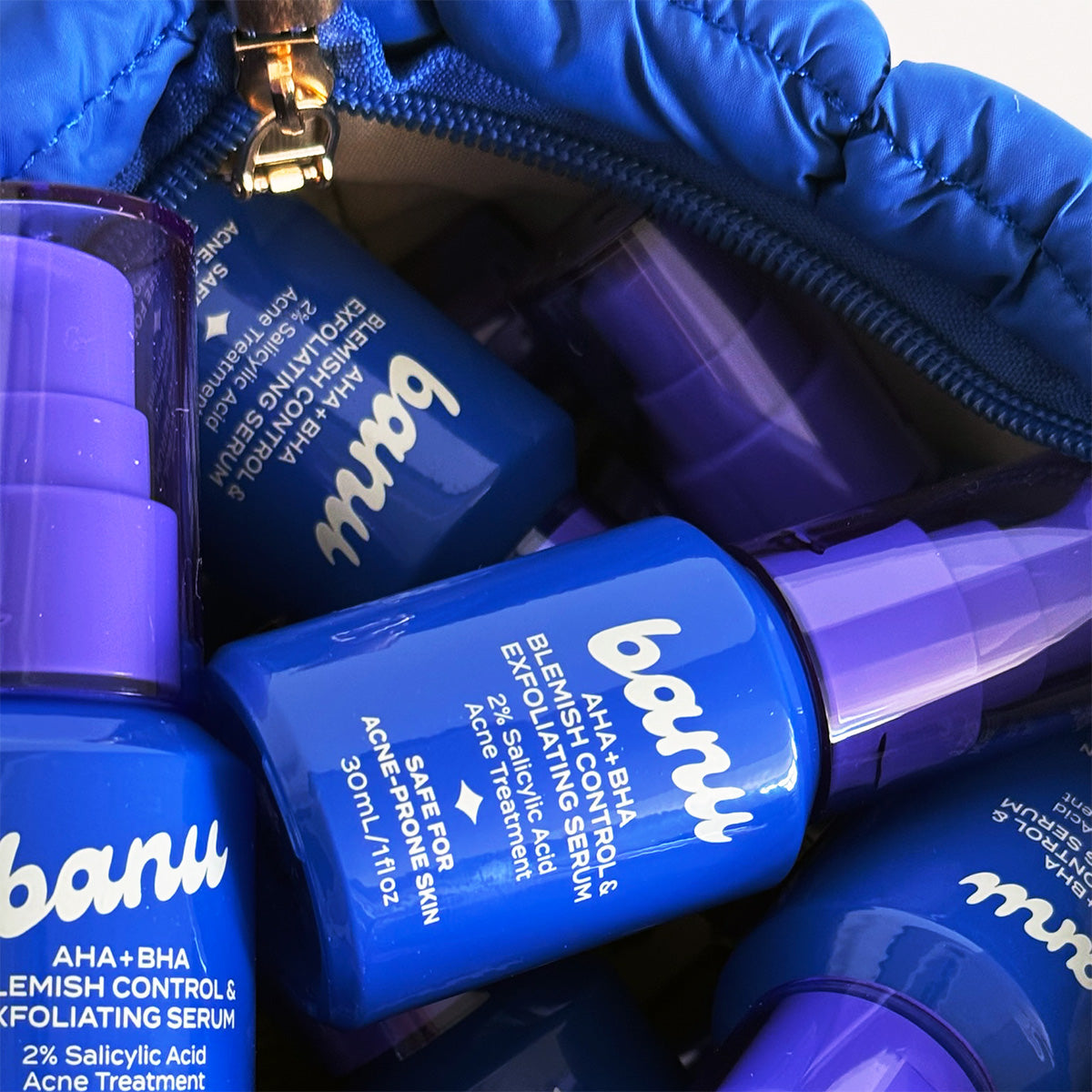How to Tell If You Have Acne: Acne vs. Rosacea
11 June, 2025

by banu editorial team
Not all breakouts are acne.
If your skin constantly looks flushed, your “pimples” never form heads, or your cheeks are covered in tiny bumps that don’t respond to typical acne treatments, you might be dealing with rosacea—a chronic skin condition that’s often confused with acne vulgaris.
Knowing the difference between acne and rosacea is key to getting the right treatment—and avoiding ingredients that could make your skin worse.
What Is Acne?
Acne vulgaris is a common skin condition that occurs when pores become clogged with oil, dead skin cells, and bacteria. It’s often triggered by hormonal changes, genetics, or comedogenic products.
There are several types of acne lesions:
- Whiteheads (closed comedones)
- Blackheads (open comedones)
- Papules (red bumps)
- Pustules (bumps with pus)
-
Nodules and cysts (painful, deep lesions)
✅ Typically affects:
- Face (forehead, cheeks, chin)
- Chest and back
- Shoulders or jawline
What Is Rosacea?
Rosacea is a chronic inflammatory skin condition—not acne—that causes facial redness, visible blood vessels, and sometimes acne-like bumps (known as papulopustular rosacea).
Rosacea doesn’t involve clogged pores, and it tends to affect the central face—cheeks, nose, and sometimes the forehead.
Signs of rosacea include:
-
Persistent redness or flushing
Visible capillaries or broken blood vessels - Bumps or pustules that resemble acne—but with no blackheads or whiteheads
- Burning or stinging
- Skin that reacts strongly to heat, alcohol, spicy foods, and sun
✅ Typically affects:
- Cheeks, nose, and chin
- Fair-skinned individuals (but not exclusively)
Acne vs. Rosacea: Key Differences
Feature |
Acne |
Rosacea |
|
Clogged pores |
Yes |
No |
|
Blackheads/whiteheads |
Common |
Rare or absent |
|
Redness |
Sometimes |
Persistent |
|
Location |
Forehead, jawline, back |
Cheeks, nose, central face |
|
Triggers |
Hormones, oil, bacteria |
Heat, sun, alcohol, spicy food |
|
Flushing or stinging |
Rare |
Common |
|
Age of onset |
Teens–20s |
Late 20s–40s |
|
Comedogenic products |
Can worsen |
Often too harsh |
Tip: If your breakouts aren’t improving with acne treatments—or are getting worse—you might be treating the wrong condition.
Can You Have Both Acne and Rosacea?
Yes—especially if you’re in your late 20s or older. It’s called acne rosacea, and it requires a gentler approach than traditional acne treatments.
Ingredients like benzoyl peroxide, retinoids, and strong exfoliants can irritate rosacea-prone skin—even if they help with breakouts.
What to Do If You Think You Have Rosacea
If you're noticing:
- Flushing that lasts more than a few minutes
- New sensitivities to skincare or makeup
- Redness that gets worse with sun, heat, or spicy food
- Breakouts that don’t respond to acne treatments
…it’s time to talk to a dermatologist. They can diagnose rosacea and recommend the right topical or oral medications—like azelaic acid, sulfur, or prescription metronidazole.
Safe Skincare Tips for Acne, Rosacea, or Both
Regardless of your diagnosis, stick to this acne-safe and rosacea-friendly routine:
✅ Use:
-
Gentle, non-stripping cleanser
Fragrance-free moisturizer with calming ingredients - Mineral sunscreen (zinc oxide or titanium dioxide)
-
Azelaic acid (great for both acne and rosacea)
🚫 Avoid:
- Alcohol-based toners or scrubs
- Harsh acids or peels
- High-strength retinoids (unless guided by a derm)
- Products with menthol, eucalyptus, or added fragrance
Reminder: Rosacea-prone skin needs calm, not correction. Less is more.
Final Thoughts: Clear Skin Starts with Clarity
If you’ve been treating acne but seeing no results, or things are getting worse, it might not be acne at all. Understanding the difference between acne vs. rosacea is the first step toward building a routine that can help your skin heal.
A dermatologist can help you figure out what’s really going on and guide you toward treatments that make sense for your skin type.

Author
banu editorial team








































